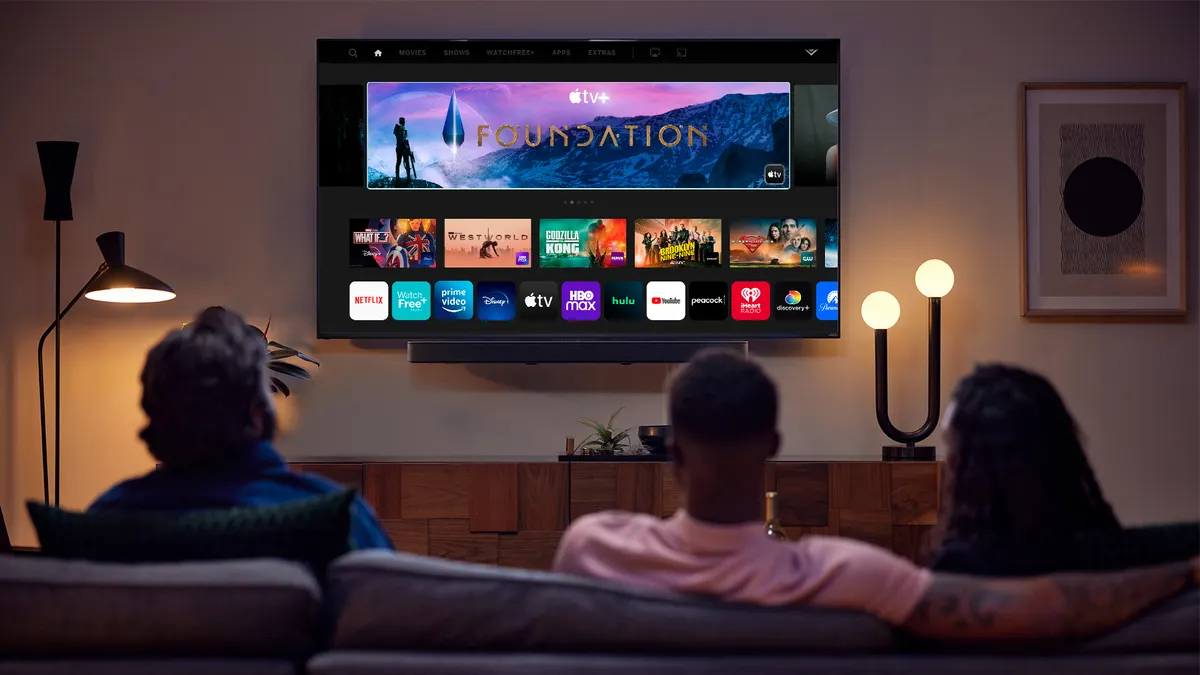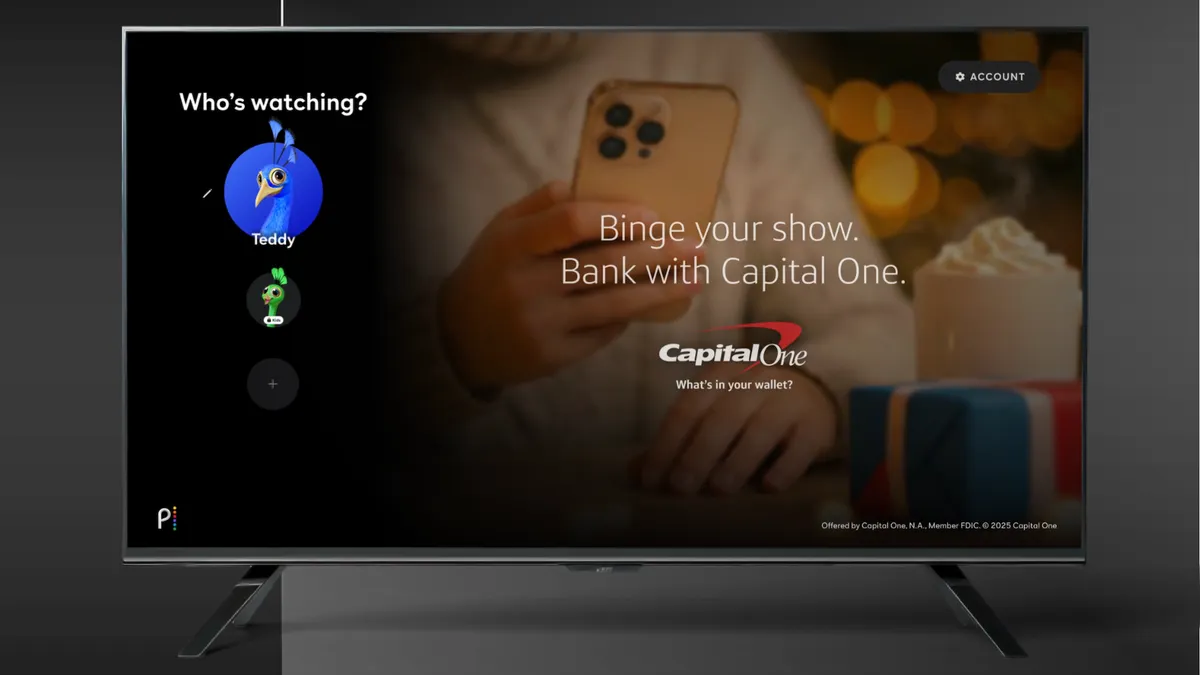Chief among the consumer behaviors that have evolved and accelerated during the first six months of the coronavirus pandemic is a shift in media consumption that presents both challenges and opportunities for marketers. As consumers spent more time at home, their time on connected TV (CTV) rose 50% and time on linear TV lifted 10% over the past six months, Jack Bamberger, chief commercial officer at Amobee, said during a livestreamed Advertising Week conference session on Tuesday.
While the CTV ad market is dwarfed by the linear one, CTV can be effective for advertisers. Compared to linear TV viewers, ad-supported CTV users are 71% more likely to tell a friend about a brand, 53% more likely to search for a brand and 52% more likely to buy a product, according to a July survey by video advertising platform Unruly emailed to Marketing Dive.
Statistics like these suggest CTV can offer marketers ways to answer some key questions during the pandemic: Who are a brand's consumers and how have their behaviors changed?
CTV's opportunities during the health crisis
Nearly all advertisers had to change their plans due to the pandemic's onset, including MolsonCoors, whose Head of Precision and Digital Marketing Nicole Kane spoke on the panel.
"We're a brand where those moments of opportunity have greatly changed because stadiums are closed, bars are closed and people are drinking more when they're at home," Kane said. "Having solutions like CTV, where we really can be more targeted and precise, makes a big impact. It's really about being agile and following our consumers so we're there at the moments that are going to matter most."
CTV offers similar opportunities for other CPG marketers. L'Oréal, for example, aligns its brands around big moments like red carpet events that reach a wide set of customers, Shenan Reed, senior vice president and head of media at L'Oréal, said on the panel. From there, CTV provides an opportunity for incremental reach as the brand attempts to engage consumers during these moments across a variety of channels.
"I want to fluidly follow [the consumer] wherever she shows up in whatever medium she chooses, to be without constraints," Reed said.
CTV can help with such incremental reach, but it still requires nuance to utilize properly.
"I sometimes question, am I actually getting incremental reach, or just capturing people who have left linear to go into other channels? I don't know if it's necessarily incremental, or just trying to keep my audience whole," Reed said. "Then there's the opportunity to get specific. I don't think we've cracked that nut on the specificity of what CTV can do for us."
The growth of both CTV and linear, albeit at different rates, is likely to change priorities for marketers when negotiating upfront ad buys going forward as they seek flexibility, fluidity and more opportunities amid different content and inventory sources.
"We still see linear as driving so much of our business, so it's a matter of extending what is already working [on CTV]," said Danielle Gonzalez, president and chief client officer at Starcom Worldwide, who leads media for Kraft Heinz.
The pandemic has demonstrated how flexibility between marketers and media sellers is more important than ever, as COVID-19 has upended events, programming and consumer behaviors.
"The need for flexibility is going to be paramount in negotiations for next year. We need to be able to follow consumers, and we need to be flexible in moments like this," Kane said. "Who can predict when the next moment like this might happen?"
Flexibility and measurement ahead
Along with flexibility, marketers want better measurement tools to ensure their CTV ad buys are effective and efficient. Rather than the demographic and daypart segmentation of the past, layering in CTV allows for a more granular understanding of audiences. For Kane and MolsonCoors, this is key for engaging younger, 21+ audiences.
"In order to do that, you have to find the cord-cutters and cord-nevers, and [CTV] is another way we can get them in fold... as well as managing frequency so we're not hitting them so many times that we start to annoy them with our message," Kane said.
"We have to remember the value and purpose of using CTV in the first place."

Shenan Reed
L'Oréal, SVP and head of media
Amid the cord-cutters and cord-nevers, CTV is another way for marketers to reach consumers. But it is far from the only way, alongside linear, over-the-top, digital video and social video. Connecting all of these channels with data — and the better measurement and attribution this promises — is something marketers and their partners must work at to catch up to where consumers already are.
"As advertisers, we are craving for the industry to get there faster. The more we can push, the more we can beg, the more we can use our dollars to influence getting those pipes connected [the better]," Reed said.
Marketers and advertisers no longer invest dollars where they can't prove value. But true outcome-based measurement also requires a nuanced approached.
"It's a matter of defining what we mean by outcome. So many brands want to focus specifically on ROAS or ROI, and really get down to a sale, but the outcome isn't always the sale," Reed explained. "We have to remember the value and purpose of using CTV in the first place and attribution is such an important piece."
The growth of CTV during the pandemic points to where consumers are likely to be in the future. But the unique challenges of the pandemic and its wide-ranging effects on the economy also obscure what those customers will look like in the future. Reed noted there is still a large portion of the population that's unable to be consumers as they usually would, amid layoffs and other financial hardships.
"It's important to remember we're servicing customers that we have today, and also remember there's a whole customer base out there that we have to continue to help support until they get back on their feet," she said.





















